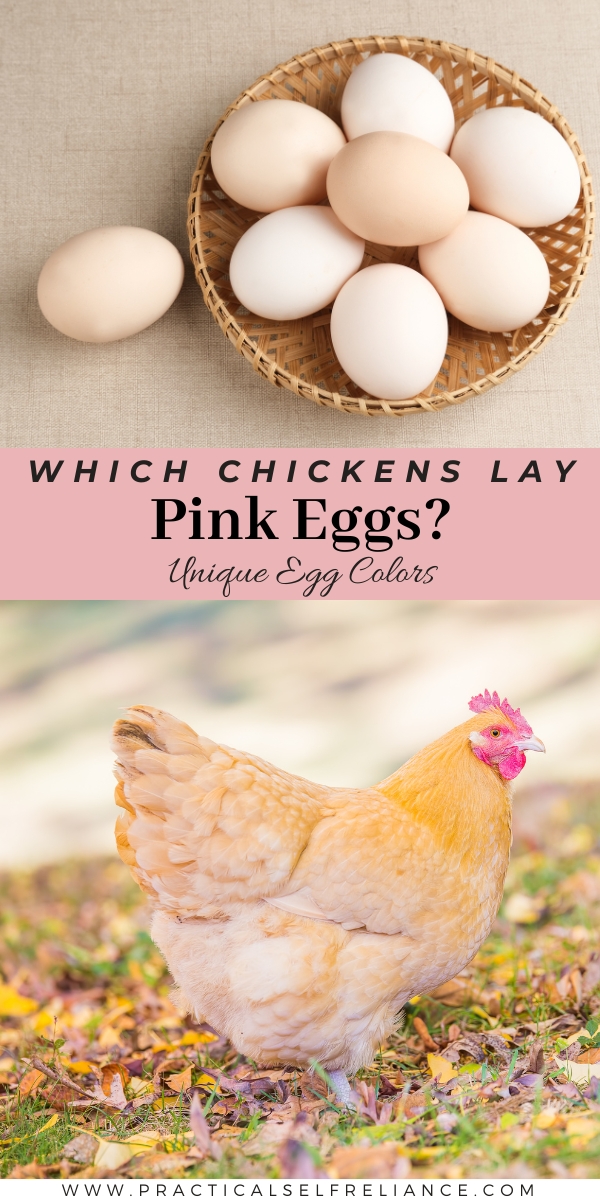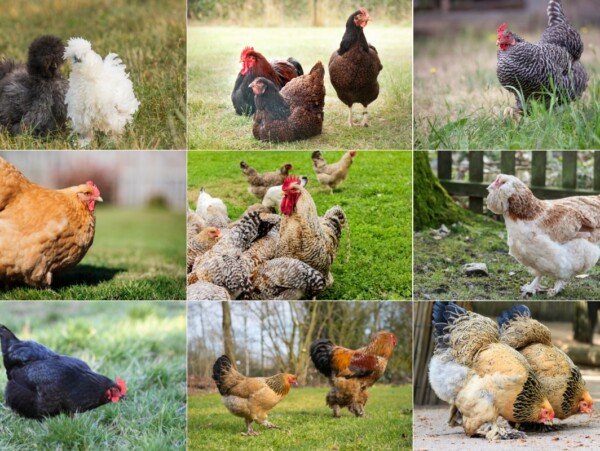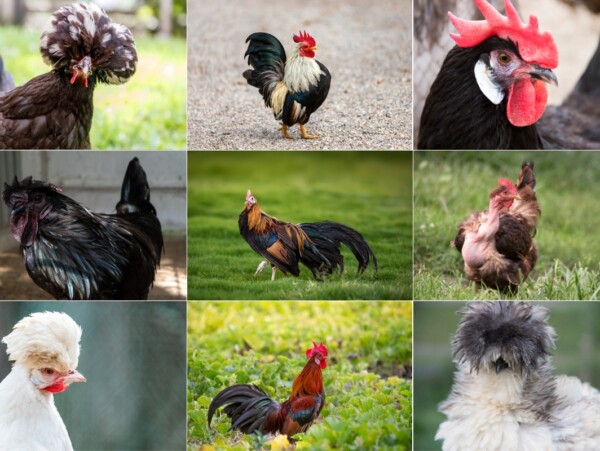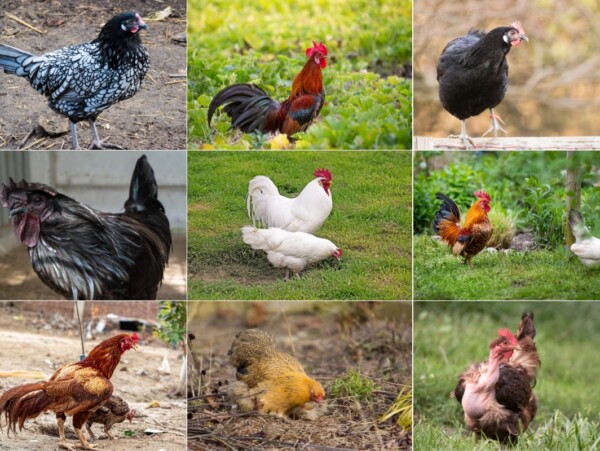Affiliate disclosure: This post may contain affiliate links. Please see our Privacy Policy.
Pink chicken eggs? Really? Some chicken breeds lay eggs with a pink color hue, and they’ll add interest to your rainbow egg basket.
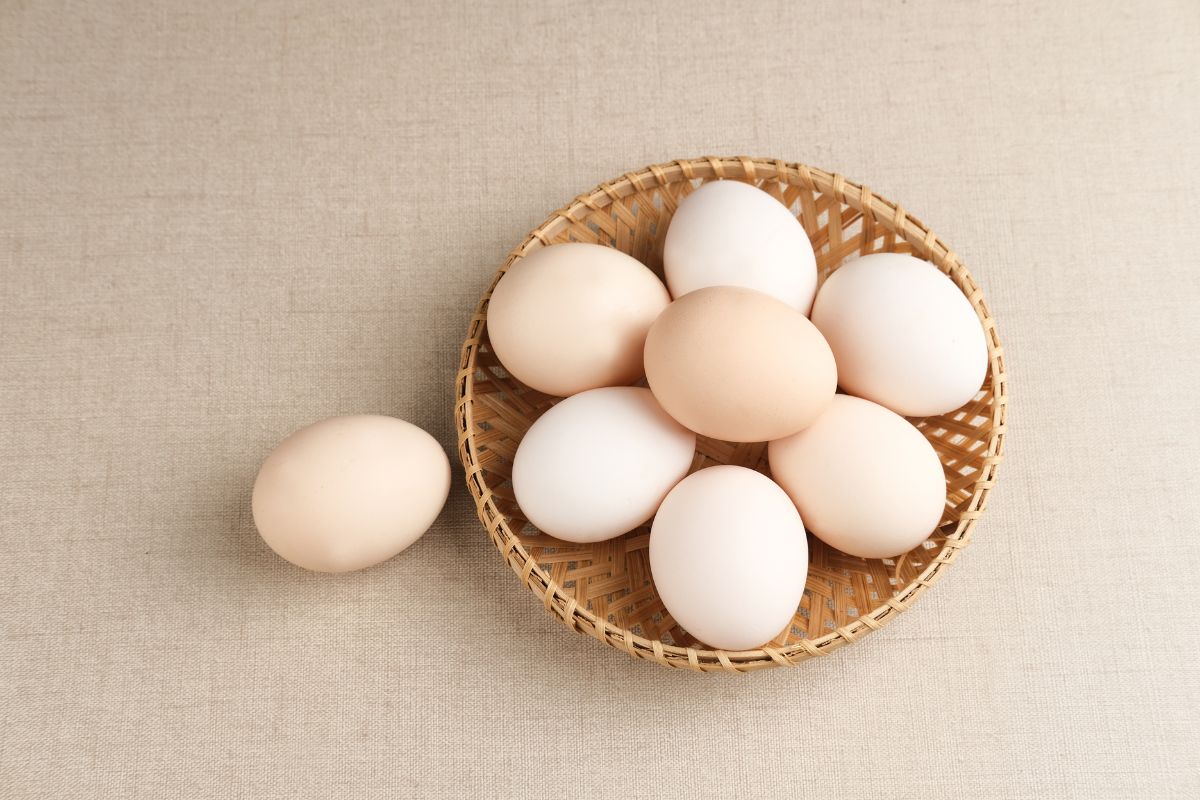
Pink egg shells come in a variety of pastel hues: salmon, baby pink, seashell, and sand (to name but a few). I think these eggs are particularly special, as pink isn’t a color specific to any breed of chicken. Rather, they’re more like gorgeous and lucky little accidents.
While you’ll never find a truly pink egg, the kind that’s reminiscent of Barbie or magenta blossoms, there are certain breeds that will produce pink eggs that are much more gentle in color. Because of the spontaneous nature of these eggs, it always feels extra special when we find a pink egg (or two!) to add to our collection.
If you’re interested in upping the chances of finding pink eggs in your backyward coop, this blog post will give you a good introduction to the breeds that are more likely to lay pink-colored eggs.
(If you’re interested in collecting a rainbow of eggs from your backyard flock, I’d suggest reading my beginners’ guide to chicken egg colors, where I take you through all the different color options… including easter egger chicken breeds that lay blue eggs and olive egger breeds that lay green eggs.)
How are Pink Chicken Eggs Formed?
For any egg, no matter the color, it takes about 26 hours for it to go from yolk to a fully formed egg with a shell. Over the course of 26 hours, the egg moves through the oviduct, a tube roughly 2-feet long that’s part of the hen’s anatomy. Because egg shells are made from calcium carbonite, a naturally-occurring mineral, all shells are white unless and until a pigment is added during the final stages of formation.
These pigments are known as porphyrins and come from the hen’s uterus. Some pigments, such as those excreted for blue shells, coat the egg early on forming a completely blue shell. Brown shells are coated with a brown pigment that only covers the exterior of the shell, when the egg is cracked open you’ll notice the interior of the shell is white.
Pink shells are a result of a natural bloom forming on the outer shell, creating the appearance of a pink-tinted shell. Again, although the exterior is pink, the interior of the egg will remain white.
Where do Pink Egg Chickens come from?
Pink egg chickens come from all over the world and not one particular area, with breeds originating in countries such as France, England, the United States, and China. These pink laying breeds are known to produce eggs in a variety of colors, typically a range that includes cream- to brown-colored eggs, but some are more likely to lay eggs that fall somewhere between the two, ultimately producing a pink-tinted shell.
Pink Egg Laying Chicken Breeds
While the chicken breeds listed below won’t lay pink eggs exclusively, it’s always a pleasant surprise to find a pink-tinted egg to fill your egg basket.
Salmon Faverolle
Originally from the French commune of Faverolles in Northern France, Salmon Faverolles produce beautiful pink-tinted eggs, about 4 per week or up to 200 eggs per year. True to their name, these birds have salmon-colored plumage which is made up of layered light brown and light honey feathers. A medium-sized breed, Salmon Faverolle hens weigh about 6.5 pounds and are known for being friendly and docile.
Salmon Faverolles love to roam freely and are excellent foragers, laying eggs over the course of the winter as well as over the summer. This breed is cold hardy as long as they stay dry; they should be given shelter when the weather turns hot.
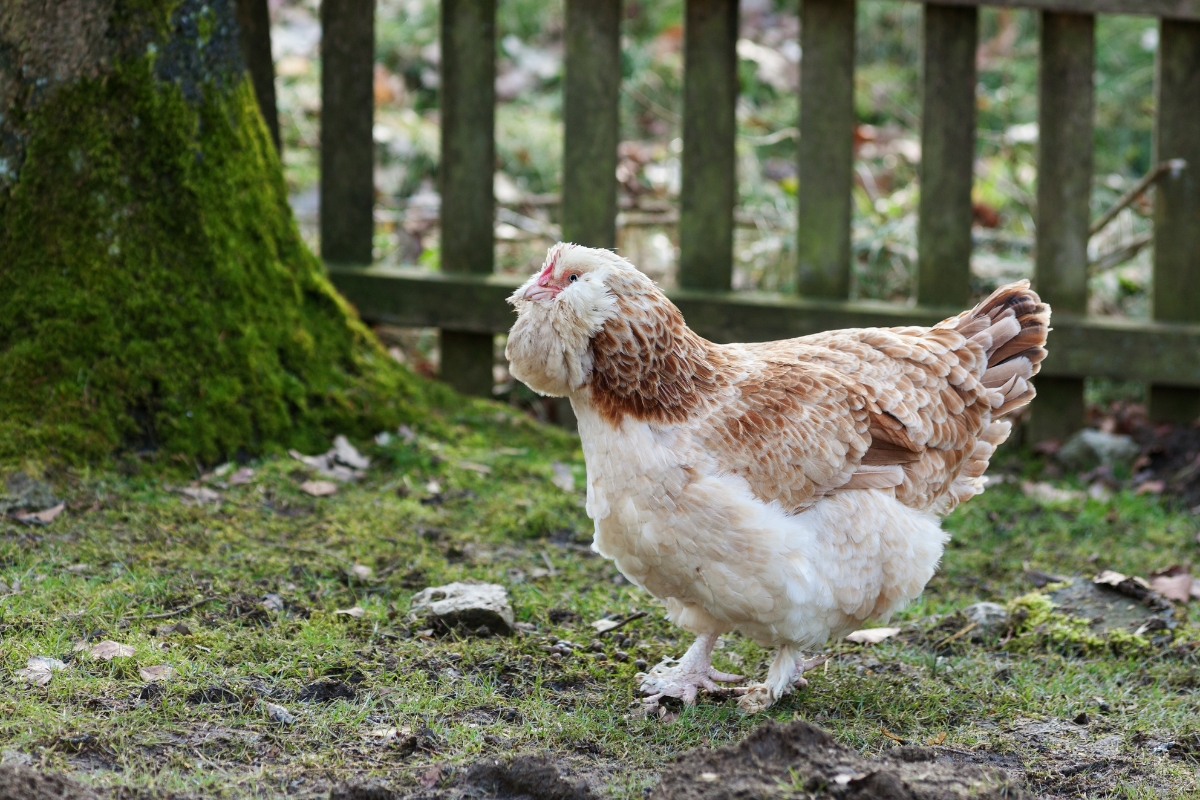
Light Sussex
Light Sussex chickens are thought to have originated in what is now England since Rome first invaded 2,000 years ago. Known for being excellent layers, Light Sussex hens lay 4 to 5 large brown or pink eggs per week or up to 240 eggs per year. These chickens have a calm, friendly temperament and are on the medium-end of the size spectrum, weighing roughly 7 pounds when fully mature. With their white feathering and ribbons of black on their tails and wingtips, Light Sussex chickens have a distinctive regal appearance.
They’re excellent foragers and will sometimes even catch mice in addition to their regular feed. Light Sussex hens are hardy birds, particularly in cold winter conditions, but will need shelter from the heat when the temperature rises during the summer months.
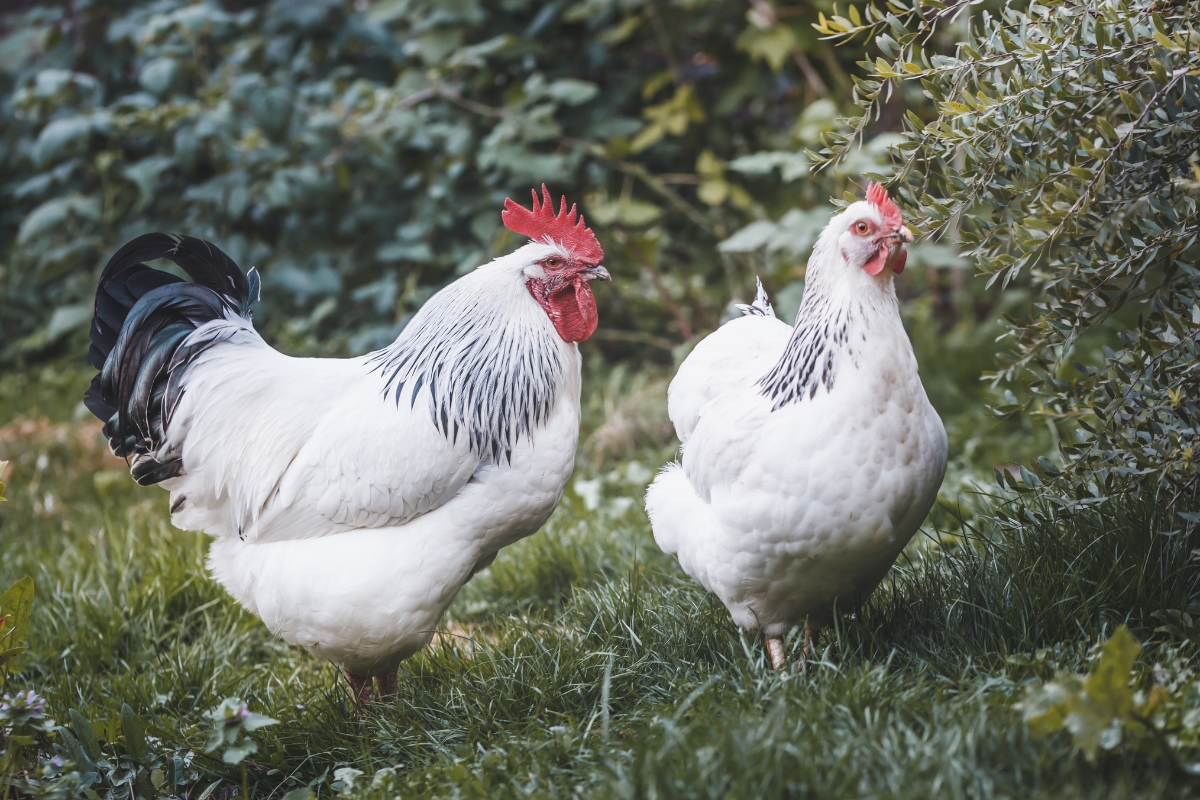
Croad Langshan
Another old breed of chicken, Croad Langshan hens lay light brown eggs that occasionally have a pale plum-colored bloom. Weighing in at 7.5 pounds, Croad Langshan hens will lay 4 large eggs per week or around 200 per year. A relatively rare breed, these birds are active and intelligent birds. Originating in Northern China, this breed has three different varieties: blue, white, and black.
Keep an eye on their feathered legs, which are prone to scaliness and mites if they get dirty and wet. This breed is quite hardy, but if temperatures are extreme they’ll need shelter to protect from frostbite and heat exhaustion.

Barred Rock
Barred Rock hens technically lay brown eggs, but will sometimes surprise you with large- to medium-sized eggs—around 4 per week or over 200 eggs per year. A large breed of chicken, Barred Rock hens generally weigh around 7 pounds. Known for being hard-working and producing plenty of eggs, Barred Rocks will continue to lay eggs until they reach 10 years of age (with their peak laying age being around 3 years old).
An older heritage breed, Barred Rocks first made an appearance in the mid-1800s. Barred Rock hens are friendly and docile and while they love to forage and roam free, will also thrive in confinement if need be. Barred Rocks hens are very cold-hardy—the roosters not so much—but will need shelter from the heat in warm temperatures.
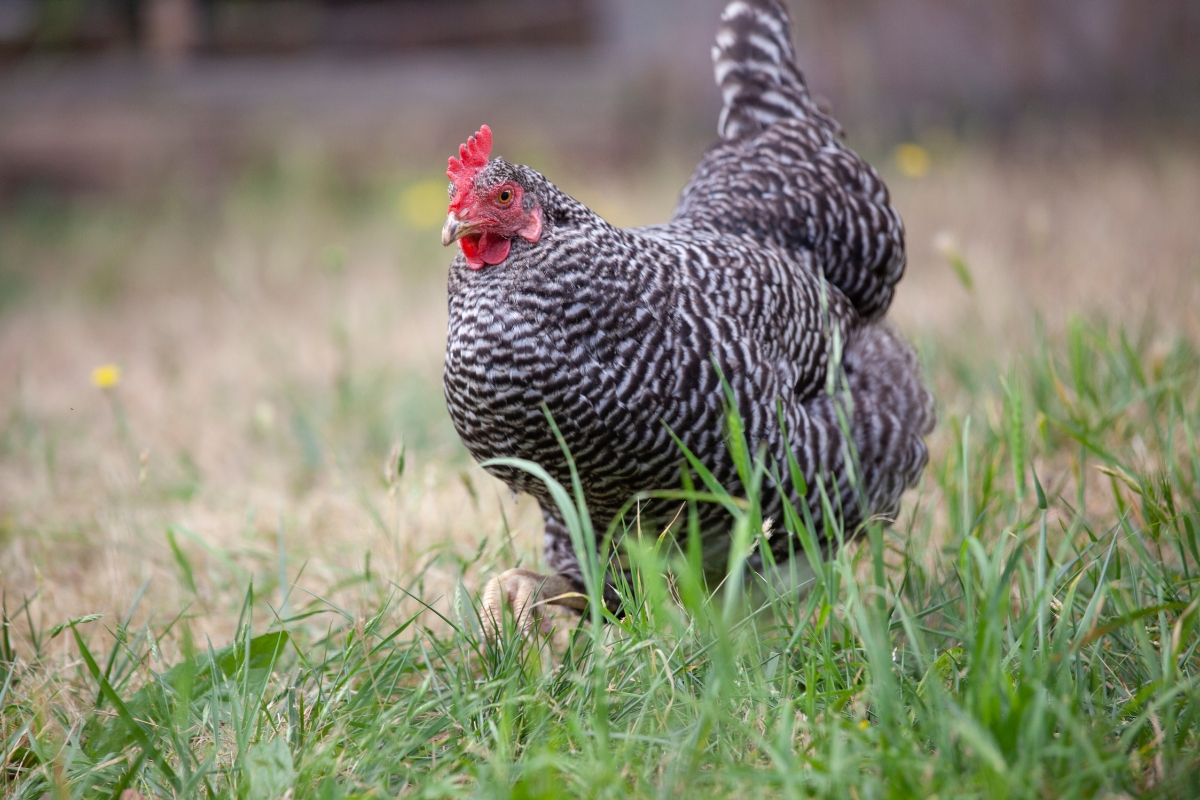
Buff Orpington
Bred in England for use as egg-layers as well as for their meat, Buff Orpingtons are heavy birds, with hens weighing in at 6 to 8 pounds (thanks to their feathers, Orpingtons often look larger than their actual size). Buff Orpingtons will typically lay 3 to 5 pinkish brown eggs per week or up to 280 eggs per year. Interestingly, historical records show that Buff Orpingtons used to weigh as many as 340 eggs per year.
A breed that’s known for its friendly and gentle temperament, Buff Orpingtons were brought back from near-extinction thanks to the efforts of breeders in 2016. These birds are hardy to both cold and hot weather, but will need shade and water when temperatures rise.
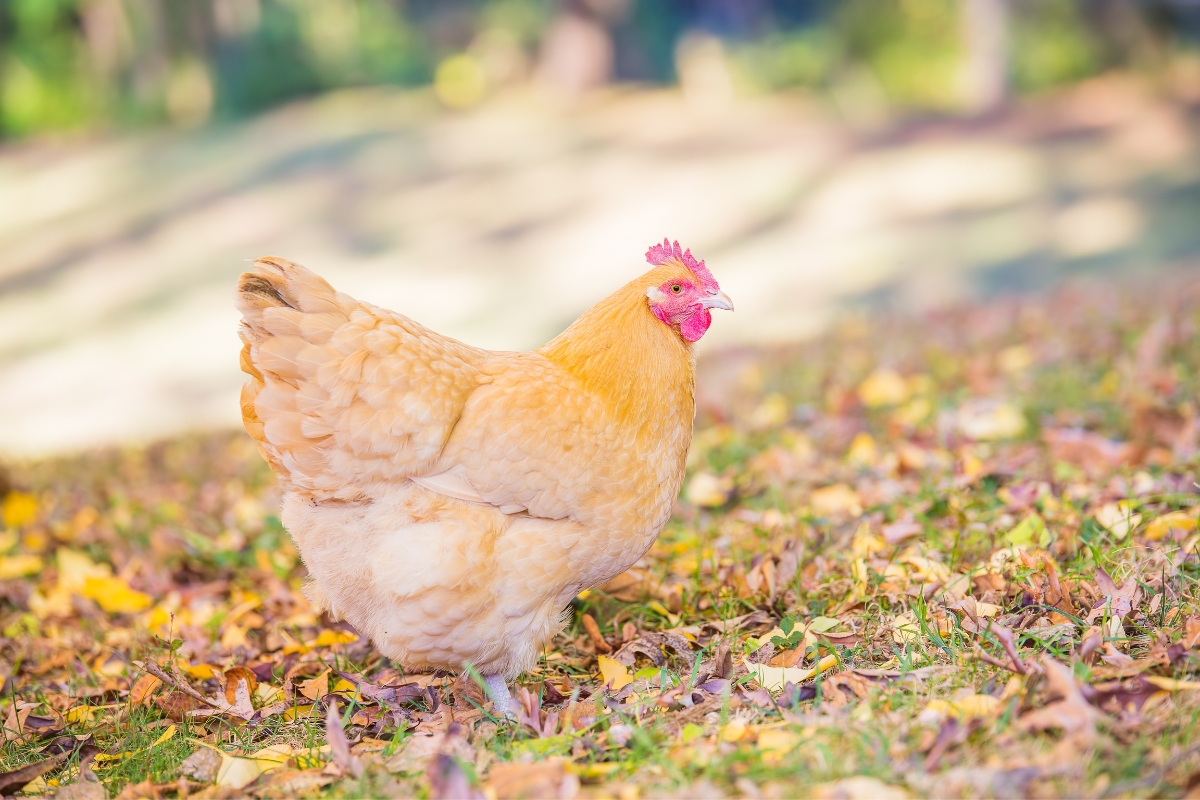
Silkie
This unusual-looking breed lays eggs in range of colors: cream, tinted brown, and a pinkish color that falls somewhere between the two. Silkies are delicate birds and need lots of TLC, particularly when they get wet—a wet Silkie needs to be blow-dried or towel-dried to prevent their feathers from sticking together.
Given their fairly high-maintenance nature, Silkies make better pets than they do reliable egg layers.
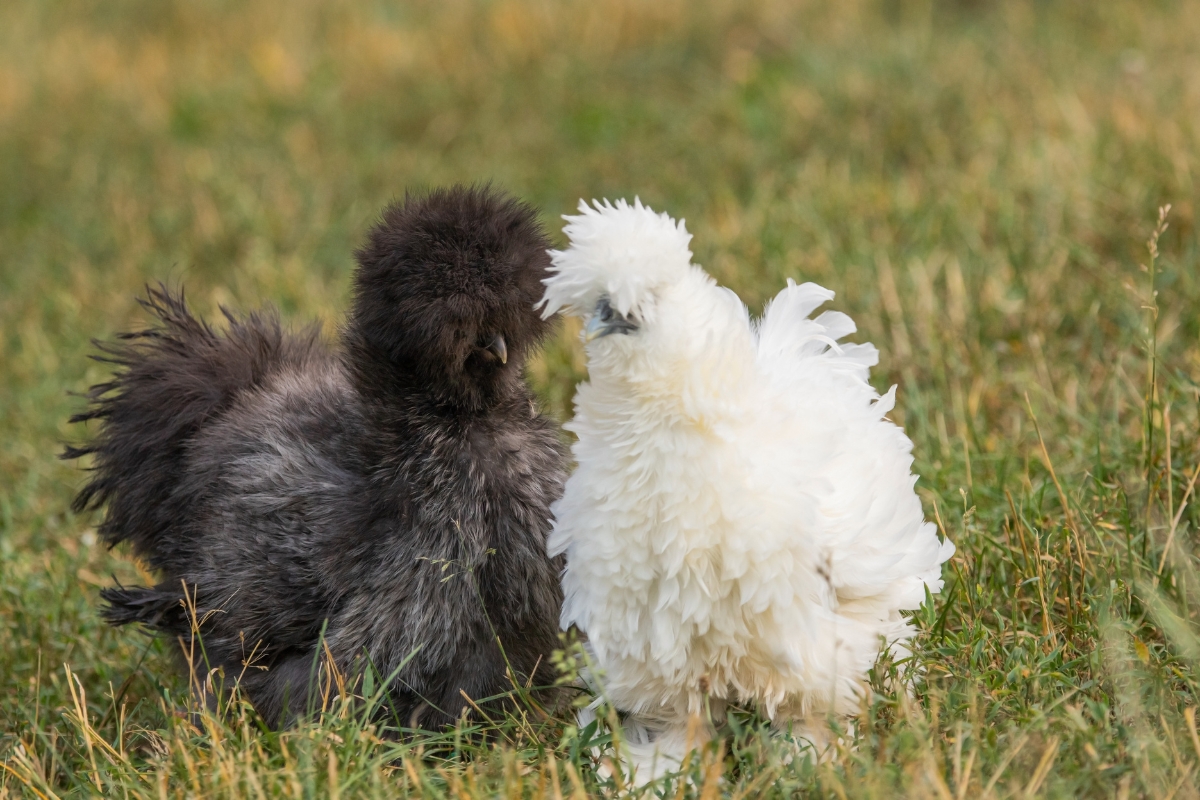
Chicken Guides
Looking for more guides to help you with your backyard flock?
- How Much Does it Cost to Raise Chickens?
- Easy Homemade Pickled Eggs
- Duck Eggs vrs. Chicken Eggs: What’s the Difference?
- Storing Eggs in Limewater (Keeps 12+ Months!)
- 30+ Ways to Preserve Eggs
